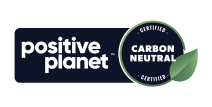Keeping your internal linking strategy both up to date and optimised can be difficult, especially when you’re dealing with enterprise sites and large volumes of content.
However, taking the time to review your existing efforts, fix any issues and make improvements can result in a noticeable uplift in your organic traffic.
What are the benefits of internal linking for SEO?
There are three main benefits of having a site with a well-organised internal linking strategy:
- Crawlers discover more pages
- Links pass authority to other pages
- User engagement metrics are boosted
Crawlers discover more pages
When search engines are crawling your site, they will be able to discover pages they may not have known existed through internal linking.
Google itself says on Google Search Central: ‘Some pages are known because Google has already visited them. Other pages are discovered when Google follows a link from a known page to a new page: for example, a hub page, such as a category page, links to a new blog post.’
Links pass authority to other pages
If one of your pages is benefiting from backlinks pointing to it, for example due to a Digital PR campaign, Google will recognise it has a higher authority as a result.
You can capitalise on this boosted authority by inserting internal links to this page on your other pages. So if page 1 has gained backlinks, ensure you link to it in page 2 so that some of the ‘link juice’, or link equity, is passed down.
User engagement metrics are boosted
When users are reading your page and encounter an internal link, they are more likely to stay on your site longer if they want to click through and explore the topic in more detail.
Your user dwell time metrics will increase, sending positive signals to search engines about the quality of your site. These signals will be rewarded with higher search rankings over time.
Optimising your strategy
Now that we have covered the benefits of having an optimised internal linking strategy, here is the 10-step process we recommend following whenever you want to give yours a boost.
- Audit your site architecture
- Build out from your pillar pages
- Fill in gaps in your topic clusters
- Track your existing links
- Optimise your anchor text
- Pass link equity from authority pages
- Support your new pages
- Build links to all orphan pages
- Boost link equity with Digital PR
- Routinely audit your existing links
1. Audit your site architecture
There are different types of internal links. The most important are your navigational links, which are permanently situated on your main menu and comprise your site’s primary navigational structure.
It’s vital to ensure you choose the right taxonomy for your site so you aren’t making data classification mistakes which could hurt your SEO down the line.
If your content is not performing, consider adjusting your taxonomy and restructuring your site. Your site may have years of content archives which have fallen through structural and categorisation gaps, so make sure your structure is optimised before moving on.
If you don’t have one already, create a spreadsheet documenting each of the URLs on your site, indicating where it sits in the context of your site structure. You will use this document to keep track of your internal linking later on.
2. Build out from your pillar pages
If you don’t know what your pillar pages would be, now is an ideal time to take a step back and identify your core topics – before you start this entire process from the beginning.
However, chances are you will have a few larger pieces that branch out to a number of smaller pages about sub-topics. You may call these cornerstone pages, or main pages. As you identify these pages, ensure they are written with consideration of EEAT principles.
Knowing where your pillar pages are situated will help you to build out topic clusters from each. Pillars and clusters are the key content elements which contribute to the architecture of your site.
3. Fill in gaps in your topic clusters
While you are looking at your overall site architecture and pillar pages, now is a good time to consider where content gaps may exist in your topic clusters.
You won’t be writing the content at this point in time, but it makes sense to bookmark pages which should be created and linked between further down the line.
Keyword research tools, Search Console data or keyword information from Google Ads will all help you to identify where you may be missing content – and keyword optimisation – opportunities.
4. Track your existing links
Your spreadsheet should now contain an overview of your site, indicate where your pillars and topic clusters are, and showcase where you have content gaps that need to be filled.
Now you can go through your pages and make a record of the internal links you have on each one. As you move through your body of content, you will become aware of more opportunities to place internal links.
Some pages will have no links, which you can easily fix. You will also encounter broken links which should be resolved, or issues such as compounding 404 errors in Search Console may arise as crawlers discover them over time.
Once you have full awareness of your preliminary internal linking landscape, and you have fixed the initial issues, you can work on further optimisation.
5. Optimise your anchor text
Whenever you are placing a contextual internal link, you want to ensure that the words and phrases you apply the link to – also known as the anchor text – clearly indicate the topic of the hyperlinked page.
Not only will this provide clarity for users, but crawlers will also gain an understanding of your topic clusters when it uncovers all of your contextual links on a specific subject.
Generally speaking, you want to ensure that your anchor text is brief, relevant and optimised. Don’t insert a contextual internal link on a long sentence or an entire paragraph – keep it to a few words at the most.
Try to avoid making your anchor text ‘click here’, ‘find out more here’ or similar, as this provides no indication to users or search engines about what the link topic is. However, don’t become too obsessed with making the anchor text an exact match for the topic – as long as it is relevant to the page you’re linking to, you will have done your job right.
6. Pass link equity from authority pages
There will probably be pages on your site which have high-quality backlinks directed to them, and these are the pages which Google will interpret as the most authoritative.
The good news is that this authority can be passed on to other pages with internal linking. It’s therefore a good idea to ascertain where these high-authority pages are, then work out which pages on your site would benefit most from a boost in link equity.
To find these pages, you can use a keyword research tool such as SEMrush or Ahrefs, as they have backlink analytics features which automate the process of finding pages with referring domains on your site.
From there, you can analyse which referring domains are the highest quality. You may discover toxic backlinks at this point, which should be tackled as a priority so that you aren’t penalised by Google’s link spam update.
You can then decide which of your pages need a boost by having your high-authority page linking to it.
Perhaps you have some pages which are dipping in rankings that could do with some help, or you may like to support your new pages.
7. Support your new pages
Whether you are creating new pages to fill in the gaps in your topic clusters, or you have other projects which require new pages to be created, it will be important to ensure these are supported with good internal linking strategy.
Whenever you create a new page, consider which existing pages could link out to it, and vice versa. If you are struggling, you can use the site operator to find related pages mentioning your new page’s target keyword.
Gather all of the relevant pages and ensure they are ‘talking to each other’ by placing internal links between them all. This will ensure your topic cluster is strongly interconnected and easy to crawl.
8. Build links to all orphan pages
Many large sites will have a number of pages that don’t benefit from any internal links. They will also be difficult to find as they can’t be navigated to from the main site menu or any sub-menus. In essence, this page can only be found if someone already knows where it is.
These pages should be picked up and connected to the rest of your site, as you are essentially allowing your web of content to have random fragments floating around it if you don’t.
9. Boost link equity with Digital PR
If none of your pages are currently benefiting from backlinks, or you haven’t put effort into routinely gaining any in a while, consider boosting your link equity with Digital PR campaigns.
By gaining backlinks in sites which have a higher authority than you, search engines will register these ‘votes of confidence’ from the third-party sites and give your own pages a boost as a result.
You can use this improved link equity by passing it down to other pages, as mentioned above.
10. Routinely audit your existing links
Once you have carried out all of these steps, be sure to factor in regular time to routinely audit your internal linking profile.
There will always be broken links to fix, new linking opportunities and new pages to pass link equity to, so keep on top of these efforts and enjoy the SEO benefits in return.
Need help with your internal linking?
If you don’t have time to audit your internal linking strategy, need some help with identifying high-authority pages for passing along link equity or haven’t paid attention to internal linking for a while, we’re here to help – get in touch and we’ll be happy to have a conversation.
Alternatively, book a Free Acquisitions Workshop to help you understand your position in the current search landscape and take away actionable insights to improve your rankings.












